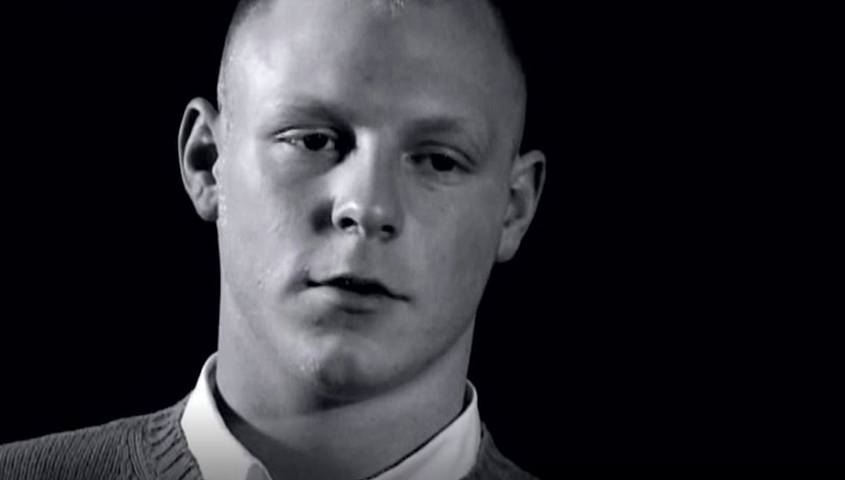KEY INFORMATION
Recommended age group: 13–14
Time required: one 45–60 minute session
Equipment: Respect yourself activity sheets, player for film.
ACTIVITY IDEA
This lesson focuses on what makes a healthy body and young people will learn about all the factors which contribute towards wellbeing such as nutrition, physical fitness, a healthy mind and positive social relationships. They will identify what they put into their bodies by creating their own Weekly body fuelling and exercise plan and understand how well they are achieving good health. Young people will realise that a healthy body is directly related to what they put in it and how they treat it.
Through group discussions, interactive activities and tasks, young people will understand that nutrition and eating well are an essential part of being healthy, helping them to perform well and feel their best. This lesson will raise awareness of various supplements, drugs and medicines, both legal and illegal. Young people will work in teams and be challenged with scenarios to think about, and activities to carry out to encourage them, and others, to lead a healthy and active lifestyle.
Part 1: Healthy habits
- Divide young people into small groups and get them to talk about and write bullet points around the following questions:
- What contributes to our health and wellbeing?
- Why is health and wellbeing important for:
- sports performance
- energy levels
- academic achievement?
- Give each group time to feed back their answers to the whole class. Highlight the benefits of healthy eating and why we need to have a balance of all food groups in our diets.
- Young people can fill out a Weekly body fuelling and exercise plan so they can identify habits and work out which food groups they consume and where they need to make improvements with their nutritional intake.
- Encourage young people to understand the importance of varying their dietary intake and how their weekly food diary should include a variety of different food groups (carbohydrates, proteins and fats) although not necessarily at every mealtime, but balanced over the whole day and over the week.
- Show young people the government Eatwell plate and their daily recommended calorie and breakdown of food groups intake.
Challenge
More able groups of children to create an ideal food plan for themselves based upon their findings from their food diary and the guidance of the Eatwell plate. They should also consider their activity levels (e.g. I have football training on Wednesday after school so will need an extra snack to ensure I have enough energy).
Part 2: Harmful habits
Watch the film case study of Adam Dean. As a whole group discuss the case study and draw on any points which young people highlight, particularly around the importance of understanding what you put in your body and consequences associated with this.
Key discussions: If a sports person uses performance enhancing drugs to achieve a better result are they being disrespectful to their competitors? Are they being disrespectful to themselves and their body? If people misuse substances such as alcohol or drugs are they respecting their body?
Many drugs, substances and medicines can be dangerous and harmful to our bodies as well as being illegal to use in sport.
- Divide young people into small groups and get them to talk about all the harmful substances, drugs or medicines they know about.
- Watch the Respect Yourself film as a whole class.
- Initiate a whole class discussion and ask young people the following questions:
- What is a drug?
- What substances are harmful?
- Medicines – who should put them in your body and when?
- Which ones are illegal in sport or life and why?
- Hand out the Quick guide fact sheet of drugs and substances which includes information on anabolic agents, steroids, laxatives, stimulants, growth hormones/ substances, diuretics and masking agents, gene or blood doping etc.
- Using the fact sheets young people must come up with either a poster or video presentation (no more than three minutes long) about the importance of being clean. If time is short, the group could be split in two to debate for and against taking performance enhancing substances in sport.
The 'Be Clean, Be Responsible' poster or video presentation must contain details for each word in the Be Clean, Be Responsible acronym. For the Be Responsible part young people can create a motto about the importance of being clean, highlighting the Olympic and Paralympic Values and feature this on their poster or presentation.
B e
C onsequences
L egal status
E ffects
A wareness
N o excuse
Young people can use the Poster/presentation tips to help them create their poster or video presentation.
Website links
- www.nhs.uk/livewell/goodfood/pages/eatwell-plate.aspx
- http://www.nhs.uk/Livewell/loseweight/Pages/Healthyfoodswaps.aspx
- http://www.telegraph.co.uk/sport/olympics/olympic_infographics_and_data/9397299/Olympics-2012-Team-GB-athletes-diets-interactive.html
Extension
- Young people can create and write down a variety of different scenarios or situations which they may find themselves or other people in around the topic of harmful substances.
- They can swap them in groups and have a go at acting them out.
- Young people can watch each other perform and then decide on appropriate consequences or outcomes for their scenario and give reasons for their opinions.
For example, 'Robert finds a packet of what look like sweets and he thinks they would taste great and be good to eat.' - To further explore nutrition with your students, use the Think Real Fuel resources. These resources aim to give young people the tools to make independent healthy choices, exploring environmental and personal influences on their nutrition and encouraging a positive relationship with food as essential fuel. The Fuel class resources take a general focus on personal development and healthy choices, while the team resources bring more of a sporting focus, for students particularly interested in PE and sport, or taking part in in extra-curricular clubs.

